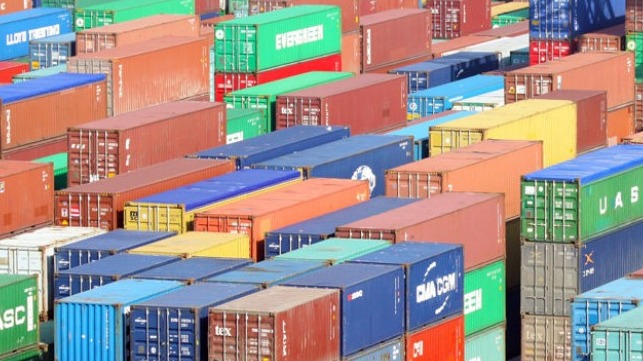Retailers Continue Rush to Beat Tariffs

Imports at major retail container ports in the U.S. have set another new record, reaching two million containers in a single month for the first time as retailers continued to bring merchandise into the country ahead of a now-postponed increase in tariffs on goods from China, according to the monthly Global Port Tracker report released by the National Retail Federation and Hackett Associates.
U.S. ports covered by Global Port Tracker handled 2.04 million TEUs in October, the latest month for which after-the-fact numbers are available. That was up nine percent from September and up 13.6 percent year-over-year. The October number was the highest for a single month since Global Port Tracker began counting cargo in 2000, topping the previous record of 1.9 million TEU set in July, which in turn had beat a record of 1.83 million TEU set in August 2017.
November was estimated at 2.01 million TEU, a 14 percent year-over-year increase that would have been a new record if not for the October number. December – normally a slow month with holiday merchandise already on the shelves – is forecast at 1.83 million TEU, up 6.1 percent year-over year. Those numbers would bring 2018 to a total of 21.8 million TEU, an increase of 6.5 percent over last year’s record 20.5 million TEU.
Both year-over-year growth rates and total volume are expected to slow considerably in January, when 10 percent tariffs on $200 billion worth of Chinese products that took effect in September had been scheduled to increase to 25 percent. January 2019 is forecast at 1.72 million TEU, down 2.1 percent from January 2018; February at 1.67 million TEU, down one percent year-over-year; March at 1.57 million TEU, up 1.7 percent, and April at 1.7 million TEU, up 3.7 percent.
“We see a significant slowdown in import growth in 2019 as the market adjusts to higher prices due to the Trump tariffs and the impact on consumer and industry confidence going forward,” Hackett Associates Founder Ben Hackett said. “We project that imports at our monitored ports will have grown significantly in 2018 but that there will be no import growth in the first half of 2019 compared with the same period in 2018.”
While cargo numbers do not correlate directly with sales, the imports are also being driven by this year’s strong retail sales. NRF has forecast that 2018 holiday season retail sales – excluding automobiles, restaurants and gasoline stations – will increase between 4.3 percent and 4.8 percent over last year. Retail sales for all of 2018 are forecast to be up at least 4.5 percent over 2017.
Global Port Tracker covers the U.S. ports of Los Angeles/Long Beach, Oakland, Seattle and Tacoma on the West Coast; New York/New Jersey, Port of Virginia, Charleston, Savannah, Port Everglades, Miami and Jacksonville on the East Coast, and Houston on the Gulf Coast.
